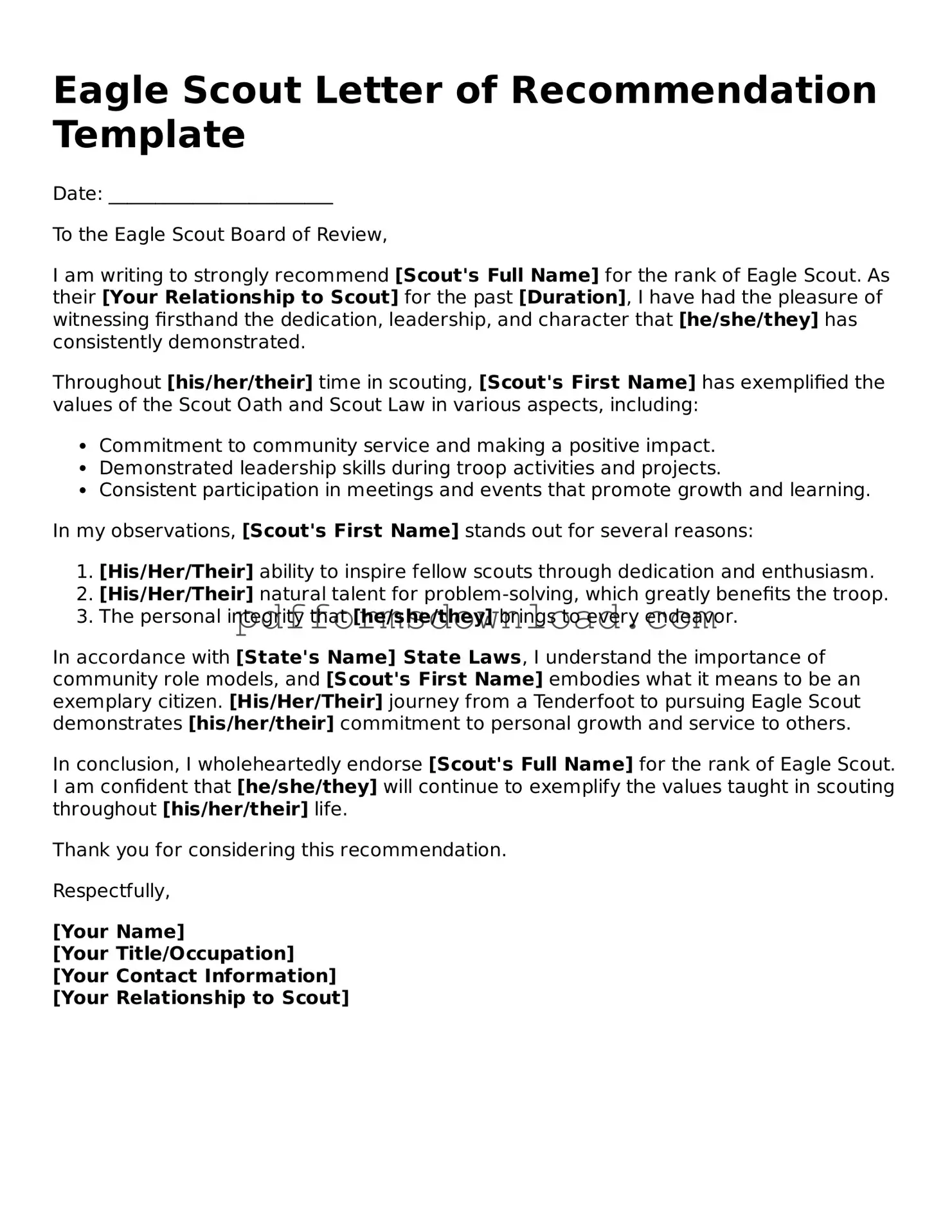What is the Eagle Scout Letter of Recommendation form?
The Eagle Scout Letter of Recommendation form is a document required for candidates seeking to achieve the rank of Eagle Scout. This form allows individuals to provide references who can speak to the candidate's character, leadership abilities, and commitment to the values of Scouting. Typically, references include teachers, community leaders, and family friends who know the candidate well. Their insights help the Eagle Scout Board of Review assess the candidate's qualifications for this prestigious rank.
Who should I ask to write my letter of recommendation?
Choosing the right individuals to write your letters of recommendation is crucial. It is advisable to select people who know you well and can provide specific examples of your leadership skills, community service, and personal character. Consider asking teachers, coaches, mentors, or community leaders who can attest to your accomplishments and growth. It is important that these individuals are familiar with your involvement in Scouting and can speak positively about your experiences and contributions.
How many letters of recommendation do I need?
Typically, candidates are required to submit three letters of recommendation. These letters should come from different sources to provide a well-rounded view of your character and achievements. Each letter should highlight various aspects of your life, such as your academic performance, community service, and Scouting experiences. It’s essential to ensure that each reference understands the significance of their letter and the qualities they should emphasize.
What should I do if I have trouble getting letters of recommendation?
If you encounter challenges in securing letters of recommendation, don’t hesitate to reach out to your Scout leaders for guidance. They may have suggestions on potential references or ways to approach individuals. Additionally, consider explaining your situation to the people you wish to ask. Many individuals are willing to help if they understand the importance of the Eagle Scout rank to you. Remember to give your references ample time to write the letters, as this can alleviate some pressure.
Is there a specific format for the letters of recommendation?
